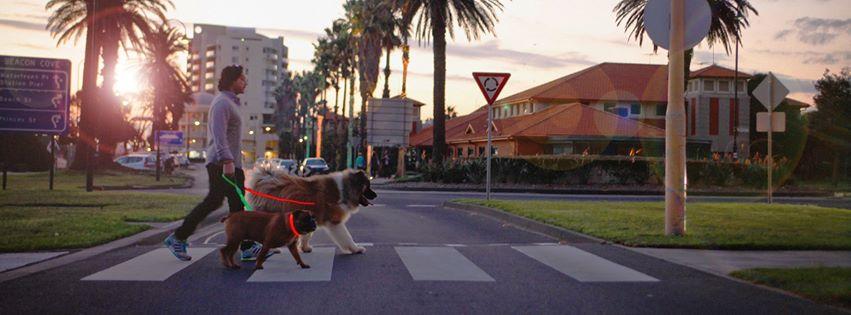May 21, 2015

How you and your dog can survive the end of daylight saving
How you and your dog can survive the end of daylight saving
Daylight saving time is coming to an end – and with it long, lighter nights and balmy summer evenings are disappearing. Of course your dog still needs lots of exercise and plenty of walks – so you’re still going to be heading out no matter what the weather or time of day. Most of us end up walking our dogs before or after work early in the morning or late at night – both times which are now likely to fall before the sun comes up. One of the most important aspects of dog safety is when they are out and about away from the relative safety of their own home and garden; and pitch-black evenings add to the risk factor when you’re taking them out for a walk during winter months. So how can you make sure that both you and your dog return safe and sound even on the darkest, coldest nights?
Make the most of daytime hours
Even though they are now more scarce, if you do find yourself with time on your hands before darkness falls, take your dog out whilst it’s still light. Late mornings, midday and early evenings are best – so if you do get the opportunity, take advantage and enjoy a walk bathed in sunlight rather than shrouded in darkness.
Stay in well-lit areas wherever possible
Staying in areas where there is sufficient light is always best for you and your dog, if you are able to. You may have one route which you take your dog on – but if that route could be changed for a safer alternative then it may be worth thinking about switching up your routine. It may be that you have certain routes you take in the summer which simply aren’t safe or suitable in the dark – so tailor your walk depending on how dark it is and how well-lit it is along the way. Avoid busy main roads and parks with no lighting.
Make sure you can both be seen
On a dark night, one of the biggest risks for dogs and owners is being knocked down by a car or cyclist because they simply didn’t see you in time. There are lots of practical ways to combat this – wearing high-vis or reflective clothing, fitting your dog with a reflective coat or taking a torch out with you on your walk. A LED Dog collar is one of the most effective and easy ways to ensure that you can both be seen. Because they are non-invasive, easy to use and economic, they last much longer than high-vis or reflective materials and can be seen from further away. You can find LED dog collars and leads in a variety of different colours and styles – all made from good-quality robust materials making them perfect for daytime walks, too.
Keep alert and be aware
When you’re taking your dog out on a walk it’s easy to get distracted – in the morning planning your day ahead or in the evening going over that meeting at work or wondering what to cook for dinner. It’s important however to be fully aware of your surroundings – and the other people and animals within them – without exception, for both your dog’s safety and your own. Try to stay alert at all times for potential issues and danger – especially if your dog is off the lead. Don’t listen to loud music through headphones and if you are speaking on the phone, make sure you have your eyes wide open keeping tabs on your dog and your surroundings at all times.
Check out this cool video here!

